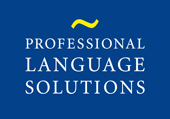As useful as standard vocabulary lists are, it is important to keep language learning fun and engaging- there are only so many times we can recite verb endings. Music is a great tool with proven benefits for language learning and, in turn, language preservation.
Why is music a great language learning tool?
Music has proven to be a popular tool for language learning for a host of reasons.
Primarily, music is a tool that can be used from the very beginning of language learning, regardless of reading or writing ability. This means that it can aid anyone, at any age or stage of their language learning journey.
Studies have found that exposure to music can help individuals distinguish between similar phonological sounds: phonological pairs (Strait and Kraus, 2011). Examples in English are sheep /ʃiːp/ and cheap /ˈʧiːp/ ,where the distinction is the /t/ sound at the start of cheap. An example in Spanish would be perro /ˈpero/ meaning dog, and pelo /ˈpelo/ meaning hair.
Looking at this finding in combination with foreign language learning, students improve their understanding of auditory input. This is why teachers might conduct a listening activity in class where students fill in the gaps on an exercise sheet with song lyrics as they listen to the song.
Listening to music in a foreign language could also result in improved pronunciation, as shown in a number of studies (Christiner and Reiterer, 2013; Pastuszek-Lipinska, 2008; Slevc and Miyake, 2006). This is because students are able to practice intonation and connected speech by imitating the sounds they hear, so there is no confusion in trying to read written words following a foreign sound system.
On a practical note, music is largely accessible. Gone are the days of being stuck with a textbook for hours on end. Now language revision could look like playing some music in your target language while you are on a walk or making dinner.

Benefits of music and minority languages
Given the benefits of music with general language learning, it is no surprise that speakers of minority languages have relied on it for regrowth. A current example for this is Scottish Gaelic.
With Gaelic tradition rooted deeply in music, it is a fitting way for the language to be retained in education across the country. Gaelic teachers in Canada have reported that, when defining new words or grammatical rules, the find music to be a very helpful resource (MacIntyre, Baker & Sparling, 2017). Taking this on board, the Scottish government have used this to inform Gaelic regrowth policies introduced at school level (Education Scotland, 2020).
Try it yourself
To get you started, here are some of our favourite artists and songs for language learning:
- Mano Chao, for French and Spanish - try Me Gustas Tu for repetition of a key language structure
- Michael Jackson, for English
- Johnny Hallyday, for French - try Pour Moi La Vie Va Commencer
- Alina Eremia, for Romanian
- Zaz, for French - try Je veux for a catchy melody
- John Lennon, for English - try Imagine for a slow-paced song
- Eros Ramazzotti, for Italian
- Mercedes Sosa, for Spanish
- ABBA, for English - try most of their songs for their repetition of lyrics and clear annunciation
- Toquinho, for Brazilian Portuguese
About the author:
 |
Orla holds an MA in linguistics from Edinburgh University and is an avid language learner. |
PLS is a language training provider based in London who work with expert tutors across many minority languages. Get in touch today to discover how we can help you or your colleagues reach your language learning goals.
References
Education Scotland. (2020) Songs and rhymes – sgoil àraich, primary and secondary | Literacy and Gàidhlig / Litearrachd agus Gàidhlig | Gaelic Medium Education / Foghlam Meadhan Gàidhlig | Scotland Learns | National Improvement Hub. (2020). Retrieved 26 March 2021, from https://education.gov.scot/improvement/scotland-learns/gaelic-medium-education-foghlam-meadhan-gaidhlig/literacy-and-gaidhlig-litearrachd-agus-gaidhlig/songs-and-rhymes-sgoil-araich-primary-and-secondary/
MacIntyre, P., Baker, S., & Sparling, H, (2017). Heritage Passions, Heritage Convictions, and the Rooted L2 Self: Music and Gaelic Language Learning in Cape Breton, Nova Scotia. The Modern Language Journal, 101(3), 501–516. https://doi.org/10.1111/modl.12417
Pawłusz, E. (2017). The Estonian song celebration (Laulupidu) as an instrument of language policy. Journal of Baltic Studies, 48(2), 251-271.
Strait, D. L., and Kraus, N. (2011). Can you hear me now? Musical training shapes functional brain networks for selective auditory attention and hearing speech in noise. Front. Psychol. 2:113. doi: 10.3389/fpsyg.2011.00113


